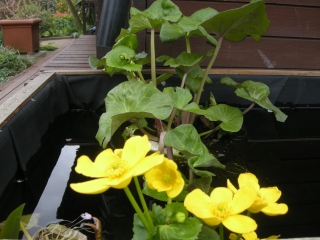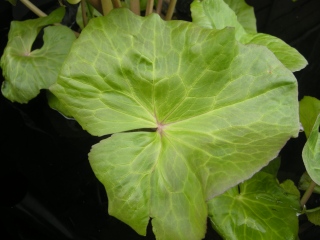Position: Full sun to partial shade
Flowering period: Spring to late summer
Soil: Moist
Eventual Height: 80cm
Eventual Spread: 80cm
Hardiness: 3a, 3b, 4a, 4b, 5a, 5b, 6a, 6b, 7a, 7b, 8a, 8b, 9a, 9b, 10a, 10b, 11
Family: Ranunculaceae
Caltha palustris is a low growing deciduous herbaceous perennial which prefers a marginal waters edge location. Its mid to dark green leaves are rounded to kidney shaped, up to 20cm across and flesh with a waxy texture . Its stems are hollow. Its yellow flowers are comprised of up to 9 sepals and 5cm across. These form into green follicles which are up to 1cm long and contain the seed. The roots of this plant are rhizomatous which aids its spread.
Caltha palustris, commonly known as Kingcup, Marsh Marigold or Cow Lily, is native to the temperate regions of the northern hemisphere, including the UK. In its native habitat it is found in marshes, ditches, river banks and other damp places. It is a highly polymorphic species. All parts of the plant are poisonous.
The etymological root of the binomial name Caltha is from the Latin for the ‘Marigold’ (Calendula officinalis). Palustris is from the Latin meaning ‘of marshes’.
The landscape architect may find Caltha palustris useful as part of a naturalistic lake, pond or swale planting scheme.
Ecologically, Caltha palustris is attractive to pollinating insects.
The Royal Horticultural Society has given Caltha palustris their prestigious Award of Garden Merit in 1993.
Caltha palustris prefers moist, fertile, soils. It tolerates most pH of soil. It will not tolerate peat or dry soils. It will tolerate a planting depth of 5cm when planted in water.








Leave a comment